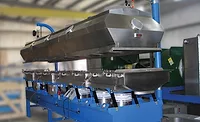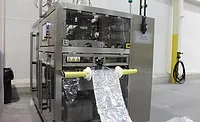Tech Update: Engine Room
Efficiency improvements offer new choices for engine room equipment
Utility costs, environmental concerns play major roles in evaluating purchasing options for new equipment and components.
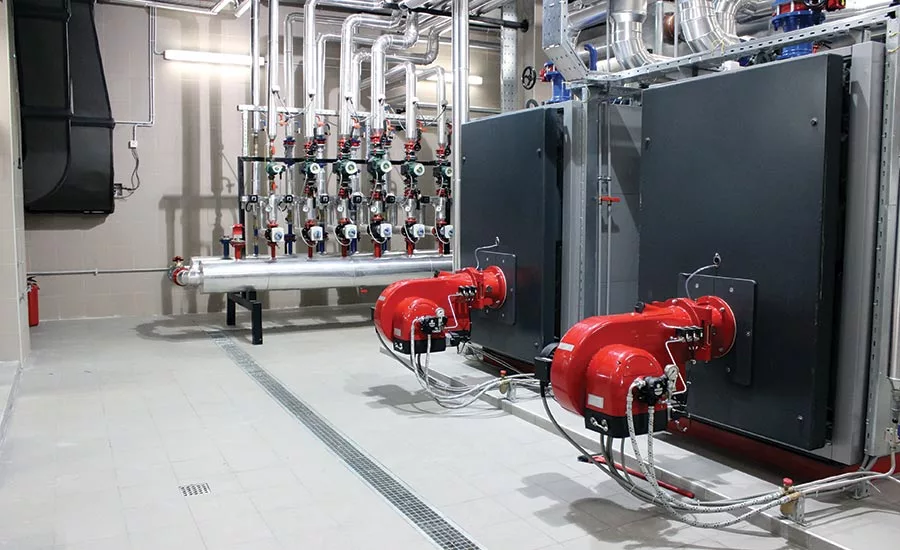
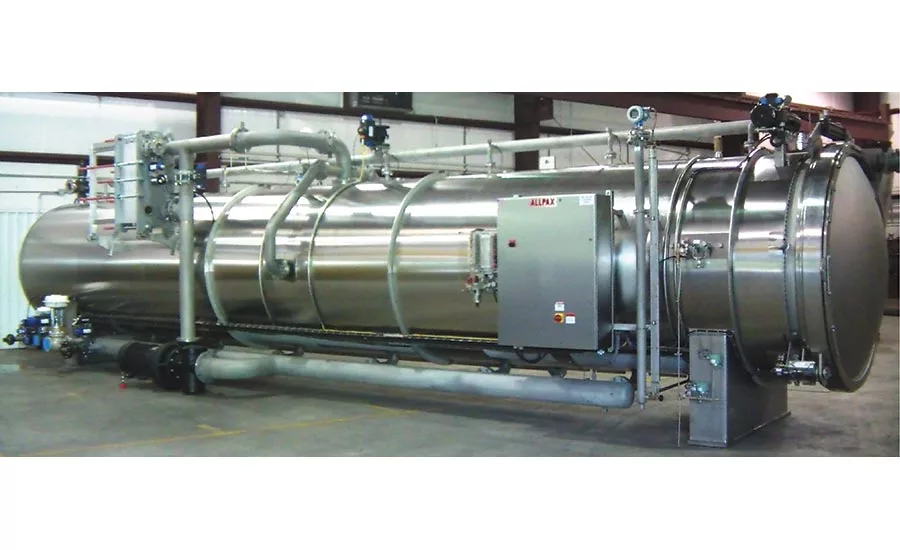
Allpax retorts can capture steam and cool it down to water that can be used in hot water applications. By doing so, they can cut water usage by up to half. Source: Allpax.
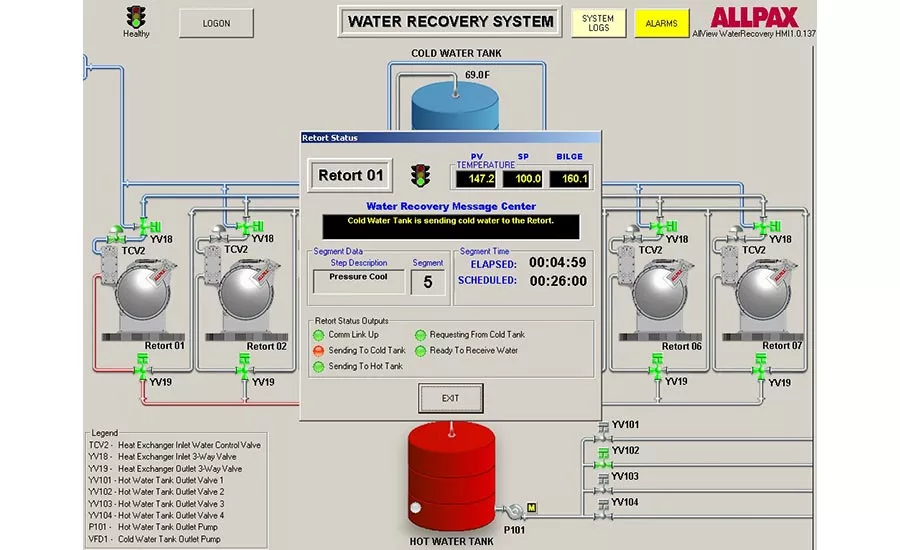
The water recovery systems from Allpax feature PLC controls and graphic HMI screens to capture critical variables. Source: Allpax.
When it comes to purchasing new equipment or upgrading existing equipment, food processors face a dizzying array of choices: Compressors that use this refrigerant versus that refrigerant, and all of the infrastructure demands of different types of refrigerants. Water heating equipment that uses different amounts of water and power based on exactly what your demands are and whether any of the water can be reused. Cooling equipment that can automatically report red flags for performance issues.
It can be a daunting task to wade through all the variables—and all the variables of the variables—to figure out how to meet your needs. But there’s good news: Just about everybody is on board with efficiency being the main driver of both engineering and purchasing decisions, so by using that as a starting point, you can determine how to best meet your needs both now and in the future.
Water, water (efficiency) everywhere
It wasn’t that long ago that water efficiency wasn’t even on the radar.
“If you go back 10 years, nobody cared,” says Greg Jacob, general manager, Allpax, which manufactures retorts for both production and R&D applications. “If you kick back the calendar five years, everybody was talking about it, but nobody was doing much. Now, corporate reliability and corporate sustainability groups are saying, ‘no, you shall do this; you have to do this.’”
“This,” of course, is saving water, and it’s a big factor in determining the proper way to go about heating water. While you have to have the ability to heat water to the proper temperature for its intended application, you don’t want to be wasting water, especially if you’re located in an environment where water isn’t just expensive, but actually scarce. There are also sustainability efforts to consider. If your facility is pursuing LEED certification or is already certified, then there are water usage requirements to comply with.
Equipment manufacturers, of course, realize all of this and are taking steps to ensure it’s accounted for early in the process. As an example, when Allpax meets with a potential client for a new or upgraded retort, it uses a spreadsheet to plug in a number of variables. Among them are whether it will be a steam or water recovery system, how much capacity is needed, how much water usage costs, how much water treatment costs and so on. By doing so, the company can calculate an ROI that won’t miss any nasty surprises when the water bill comes due.
One of the common solutions for Allpax is its water reclamation systems, which can cut water usage and provide hot water for use in additional applications. Instead of allowing steam to release into the atmosphere, it goes into a hot water tank, where it is cooled to the point that it becomes water again. But it’s still at about 180°F, so it can be used in hot water applications. It is effectively free hot water for usage in any application that needs it, which means water reclamation saves energy, water and money compared to simply letting steam vent off into the atmosphere.
Jacob points out that it’s not just the manufacturers that are being smarter about such considerations when they build the equipment. Processors are taking a different approach when purchasing equipment as well.
“The industry is getting very creative,” he says. “We quite often go in with our standard package and get comments saying, ‘well, could we do this or do that?’”
Compressing concerns
Quick, which refrigerant is the best one to use if you’re building a new plant?
If something along the lines of “how the heck am I supposed to be able to answer that without knowing X, Y and Z?” was your response, congratulations. You’re well on your way to understanding just how many variables are involved in compressor technology and determining which compressor and which refrigerant are the right choices.
The first factor is that R-22, and other hydrochlorofluorocarbons that are commonly used in food processing applications, are due to be banned from production in the United States beginning Jan. 1, 2020.
The big push in refrigerants right now is for a lower global warming potential (GWP). Ammonia, which is a natural refrigerant, has a GWP of 0. So, that makes it an easy choice, right?
Well, no, says Alan Simchick, Western regional sales manager, Vilter Manufacturing. Vilter, which is now part of Emerson Climate Technologies, makes compressors for industrial applications.
“Each of the natural [refrigerants] has its own challenges,” Simchick says. “With ammonia, there’s toxicity that needs to be understood and dealt with; with CO2, there are high pressures that need to be dealt with; with the propanes or the hydrocarbons, there’s explosivity. So, all those [factors] have to be taken into account.”
The different properties of the refrigerants need to be evaluated in the context of the plant infrastructure as well. For example, ammonia can’t be used in copper pipes and isn’t compatible with brass, so welded steel pipes would have to be used. If that requires an overhaul of existing pipes, then that has to be factored into the cost equation as well.
Because of the upcoming ban on hydrofluorocarbons compressor choices will be in something of a state of flux for the near future. The good news, says Dean Groff, regional marketing manager for compressors at Danfoss, is that the compressors themselves are not likely to change much.
“Over the years, there have been a lot of improvements in the efficiency of the compressor itself,” says Groff. “How much more you can go without changing the fundamental technologies, I don’t know.”
Keeping cool
Purchasing or upgrading refrigeration equipment such as coolers and freezers will require many of the same considerations as buying compressors, of course. The best way to evaluate those considerations and judge what you need is to be as forward-looking as possible when thinking about your needs.
“It all starts with understanding where you think your business is going to be,” says Groff. “What products are you going to be processing through that facility in the next two, five, 10 years? What equipment is best suited to meet that five-, 10-year goal?”
Once you have that laid out, then you can start thinking about efficiency, environmental impact and cost. Moving one of those sliders, so to speak, is going to affect the others, so it will likely take some tinkering with each of the factors to come up with an acceptable solution.
“It all starts with understanding where you think your business is going to be. What products are you going to be processing through that facility in the next two, five, 10 years? What equipment is best suited to meet that five-, 10-year goal?”
– Dean Groff
“You never get anything for free,” says Ole Christensen, vice president of engineering, M&M Refrigeration. “If you want a more energy-efficient system, you also have to pay more.”
The flip side to that, of course, is that the more energy-efficient system should pay for itself over time and selling that to the people who control the purse strings is becoming easier and easier as ROI and payback become primary considerations.
Another selling point for upgrading or replacing systems is the additional control and monitoring available on new equipment, which can help ensure you’re meeting environmental and efficiency targets. Over the last decade or so, the control systems and tools available to operators have advanced exponentially, and they offer the ability to manage and operate equipment in a manner that will help provide the efficiency you’re looking for. Remember that those capabilities will only improve, which means your equipment needs to be able to be a part of the monitoring and reporting if you don’t want it to quickly become outdated.
“We’re moving towards monitoring the entire cold chain,” says Groff, “monitoring the temperature of that product from farm to fork.”
Predicting the future
Regardless of what equipment and what components you are looking at purchasing or upgrading, the short-term view isn’t good enough, but it’s never easy to predict the future with complete accuracy.
“We don’t have a crystal ball to see what’s going to be available in five years,” says Simchick.
You can make some fairly educated predictions—or guesses, as the case may be. If your company specializes in frozen food, you probably won’t suddenly have to worry about the cooling requirements of fresh produce. Or, if you do cereal, the odds are decent that ice cream won’t suddenly become the next product introduced by the company. At the very least, you should have a healthy amount of advance notice before such dramatic shifts.
But it’s still ultimately a prediction about a hefty capital investment, so don’t take it lightly. By working to fill your expected needs and targets for efficiency, environment impact and performance, you can give yourself the best chance at getting it right. If you try to generalize too much, you run the risk of an attempted one-size-fits-all solution, which is most likely not where you want to be.
“The most efficient system out there for one application is not the most efficient for another,” says Groff, “so you really need to understand where you’re going to be in that time frame.”
For more information:
Greg Jacob, Allpax, 985-893-9277,
gregj@allpax.com, www.allpax.com
Alan Simchick, Vilter Manufacturing, 360-805-0590,
alan.simchick@emerson.com, www.emersonclimate.com/en-us/Brands/Vilter/Pages/Vilter.aspx
Dean Groff, Danfoss, 410-931-8256,
dean.groff@danfoss.com, products.danfoss.com/commercial-compressors
Ole Christensen, M&M Refrigeration, 410-754-8005,
olec@mmrefrigeration.com, www.mmrefrigeration.com
Looking for a reprint of this article?
From high-res PDFs to custom plaques, order your copy today!




